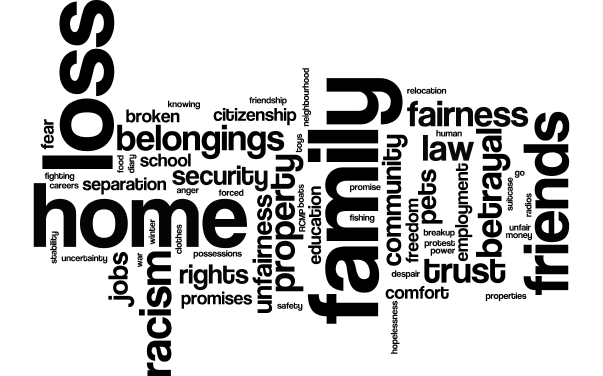
About
This website is for elementary/intermediate teachers who want to teach about:
- Human Rights
- the use of the Canadian Charter of Rights and Freedoms
- the Historical Thinking Concepts
- the internment and dispossession of Japanese Canadians
This resource uses the internment and dispossession of Japanese Canadians as a means to help students learn about the world by seeking answers to big questions such as:
- What is fair?
- How do we deal with unfairness?
- What is home?
- What is the difference between belongingand belongings?

What kind of activity could we do where students would understand this complex concept, dispossession?
We use a simulation.
- Students make a virtual community of a Japanese Canadian neighbourhood, 1940s Powell Street, on a classroom bulletin board. They populate their properties with people and possessions which they pin into their properties. Hands-on Learning)
- Because of the work students put into their virtual community, the people and the belongings, students become emotionally attached to their work. (Hearts-on Learning)
- As a class, throughout the simulation, they process how this happened, why this happened and what the repercussions were. (Minds-on Learning)
- Then, after time, after students have built up sufficient possessions, Pearl Harbor would occur and the Japanese Canadian avatars/characters from the Powell Street displays would be moved to an Internment Camp bulletin board. Then, as their incarceration continued, the possessions left in the Powell Street display would start to disappear.

How to use these activities and lessons?
Start with the Main Dispossession Activity: the Powell Street simulation.
Do the 8 Supporting Lessons concurrently so that you are ready to take away the students' simulated possessions and property by Lesson C: Introduction to Internment (Viewing Photographs).
You can choose to skip some of the Supporting Lessons if you are pressed for time.
